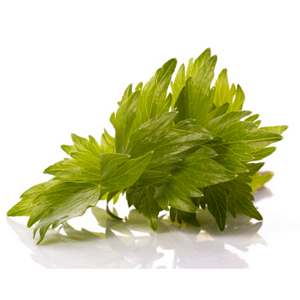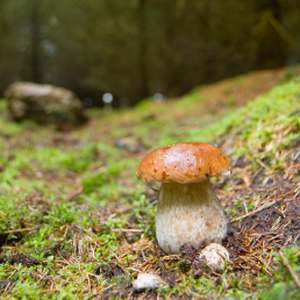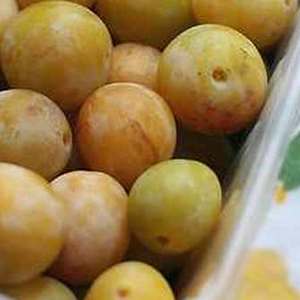
Cévenol Recipes
Issue #24, November 2010Hi, Bienvenue to the November issue of La Marmite. This month you will find some tasty and easy recipes from the Cévennes mountains in southern France.

Appropriately, there are descriptions of quite a few tantalizing local specialities and mouth watering dishes sprinkled throughout the novel. Here, by way of an introduction to the story, Rosy gives us the recipes for some of those memorable meals.
"The following recipes are based on food cooked and served by the characters in my novel The Tapestry of Love. Here I have lifted the dishes from the pages of fiction and set them out in concrete form, hoping that readers might enjoy their own taste of the Cévennes mountains."
Lovage Soup
This thick, green soup is served to Catherine at the al fresco meal shared by the inhabitants of La Grelaudière in the Mériels' orchard to celebrate the spring transhumance. It has the distinctive, astringent taste of lovage, a herb which in French is formally called la livèche but which is known to many French people as l'herbe de Maggi, because it is erroneously believed to be a key ingredient in bottled stocks produced by the Maggi company since before the war.
If you do not have lovage in your garden (where I promise, once introduced, it will grow like a rampant triffid), then substituting parsley will make for a pleasant (though rather different) herb soup.

- 1 medium onion, peeled and chopped
- 3 cloves of garlic, peeled and crushed
- 2 medium potatoes, peeled and cubed
- a good colander full of lovage leaves, rinsed and with any tough stalks removed
- 1 1/2 pints of good chicken stock
- 1 oz butter
- salt and freshly ground black pepper
- 1/4 pint cream (optional)
- Melt the butter in a heavy-bottomed saucepan.
- Add the garlic, onion and potatoes and sweat, stirring, over a low heat until soft but not browned.
- Add the lovage and pour over the chicken stock, seasoning to taste with salt and pepper.
- Cover and simmer until all the vegetables are soft, then blend in a food processor or with a hand-held blender.
- The soup should be smooth and quite thick, but if necessary it can be thinned a little with more stock, or with milk.
- If you like, you may add cream to make the soup richer - though that is not how Madame Mériel serves it!
Mushrooms on Toast
Patrick prepares this for Catherine the first time she crosses the valley to his house for dinner. It is a version of mushrooms on toast - though, as Catherine notes, the English phrase scarcely does justice to the dish.
The key thing is to use good bread, and good olive oil. Patrick will have used the pain de campagne from Monsieur Folcher's boulangerie in St Julien, made with rough, undyed white flour. Ciabatta may be the closest equivalent available in an English supermarket - or you might try a coarse white soda bread from a good baker.

- 4-6 chunky slices of good bread
- 8 oz of fresh cèpe (porcini) mushrooms
- a good, fat clove of garlic
- extra virgin olive oil, for drizzling
- salt and freshly ground black pepper
- Cut the bread into slices and lay on a baking tray.
- Turn the oven to 200°C (400°F), and place the baking tray in the oven immediately, as the oven heats. This will dry the bread out.
- Once the oven is almost to heat, remove the baking tray.
- Peel the clove of garlic and cut it in half. Rub the garlic all over the slices of bread, which should be dry and semi-toasted.
- Wash and dry the cèpes, then slice them and lay them on the slices of bread. Season with salt and pepper, drizzle liberally with olive oil.
- Return to the hot oven and cook for ten minutes.
Best eaten with the fingers!
Serves 2.
Wild Boar Stew
This is the main course that Patrick Castagnol cooks for Catherine the first time she dines at his house. A local variant on the potée auvergnate, the dish encapsulates perfectly the flavours of the forests of Mont Lozère.
- 1 saucisson dur , 8 oz approx (this is a garlicky, dry French pork sausage; chorizo or any similar dry sausage will serve as an alternative)
- 6 oz of dry-cured bacon, cubed
- 2 medium onions, peeled and sliced
- 1 whole head of garlic, peeled and chopped
- 1 lb of wild boar meat (stewing pork can be used as a substitute; chump end is good for the dish)
- 4 oz dried white beans (haricot or cannellini are good)
- 2 pints good quality chicken or pork stock
- 12 oz peeled chestnuts
- 2 medium potatoes
- 1 medium carrot
- 3-4 good handfuls of greens (Patrick uses wild greens from the woods, but you can use any good, dark greens with a little substance, such as spring greens, Swiss chard or cavolo nero)
- 1 sprig rosemary
- 1 sprig thyme
- 4 bay leafs
- salt and freshly ground black pepper
- You may be able to buy chestnuts ready-peeled and vacuum packed. If buying fresh ones, you can make them easier to peel by slitting the shells with a knife and plunging them in boiling water for a minute or so before peeling.
- Place the bacon and onions in a good-sized, heavy pot or casserole dish. Cook over a medium for 10 minutes, stirring to prevent sticking. Add the garlic and wild boar or pork, cover and cook for a further 10 minutes, again ensuring that the meat does not stick.
- Add the beans and chestnuts and enough of the stock to cover. Add the rosemary, thyme and bay leaves, and season with pepper. Cover the pot and bring to the boil and then place pot in the oven at 180°C for one hour.
- Check from time to time and add more stock or water if the beans and chestnuts seem in danger of drying out.
- Peel and quarter the potatoes, and slice the carrots. Slice the saucisson.
- When the beans and chestnuts are soft, season with salt, and add the saucisson, carrot and potatoes, and a little more stock or water if necessary. Replace the lid and put back in the oven for a further 30 minutes.
- Finally, add the greens (rinsed and coarsely shredded), give the pot a stir, replace the lid and return to the oven for a final 15 minutes.
(Note: These cooking times are the fastest that it is possible to prepare the potée. However, if you have time the dish will be even better for reducing the oven temperature and cooking for a correspondingly longer period. The slower the better!)
Mirabelle Tart
Catherine makes this dessert for Patrick and Bryony during the latter's first visit to Les Fenils, at Thanksgiving. She uses the mirabelles (a variety of small, round yellow plum) from the tree in the terraced orchard which she inherited from Madame Sauzet. If you don't have any plum-flavoured eau de vie (Catherine has some given to her by Patrick, who distills his own!) then Kirsch would be a decent substitute.
- 4 oz unsalted butter
- 2 oz plain flour
- cold water to mix
For the filling:
- 2 lbs mirabelles
- 4 oz caster sugar
- 1 egg
- 3 oz plain flour (or half-and-half flour and ground almonds)
- 1/2 pint of full fat milk (or you may prefer to use single cream, for a richer filling)
- 1 oz unsalted butter, melted
- 2 tablespoons of eau de vie de prunes
- Make the pastry by cutting the butter into cubes and adding to the flour in a bowl, then rubbing it in with your fingers until the texture resembles breadcrumbs. Add just sufficient cold water for the mixture to amalgamate to a firm dough.
- Roll the dough into a ball, wrap it in cling film and chill it in the fridge for 10 minutes.
- Pre-heat the oven to 200°C (400°F). Roll out the pastry to line a 10-inch flan dish and prick the bottom several times with a fork. Blind bake the pastry case by placing it in the hot oven for 5 minutes until just firm to the touch.
- Wash the mirabelles, cut them in half and remove the stones. Place them skin side down in the pastry case. Sprinkle the fruit with two tablespoons of the sugar.
- Beat the rest of the sugar with the egg. Stir in the flour and mix until the paste is completely smooth. Then stir in the milk or cream, melted butter, and eau de vie.
- Pour the batter mixture over the plums and bake at 200°C (400°F) for 45 minutes.
Serves 6-8.
I hope you have enjoyed reading these recipes and, I also hope, trying some of them for yourself. If it has made you hungry for a further taste of the Cévennes mountains, and you have not yet read my novel, The Tapestry of Love, you can order a copy of it here:
Thank you for reading!
- Rosy
You can also learn more about Rosy and what inspired her to write a book based in the Cévennes mountains at her website: rosythornton.com.
Next Issue
For the next issue, due out in December, I'll be featuring a Christmas menu. Happy cooking and eating until then.
If you are receiving this newsletter because a friend forwarded it to you, you can sign up for your own copy of La Marmite: Subscribe to La Marmite.
You can contact me here if you wish or sign up for the EFF RSS feed here (it keeps you updated on everything I add to the website).
A bientôt and remember to enjoy your food!
Your friend in France,
Kim

